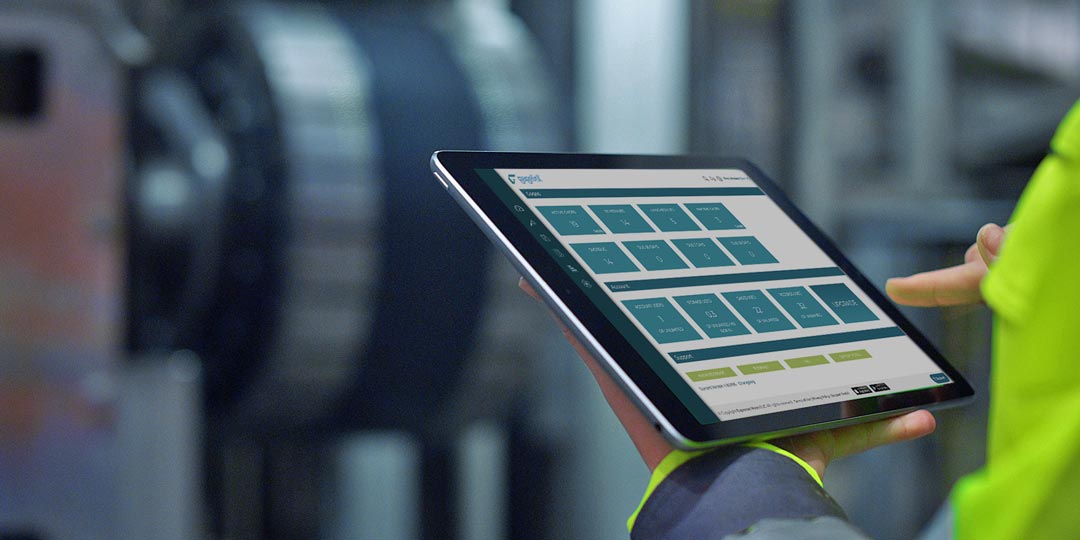Calibration Requirements of API Spec Q1 and Q2
Regulatory Compliance for the Oil and Gas Industry
API Spec Q1 and Q2 are quality management system (QMS) standards established by the American Petroleum Institute (API) for the oil and gas industry. These standards outline the requirements for manufacturing (Q1) and service supply organizations (Q2) to ensure that they consistently provide high-quality products and services that meet customer and regulatory requirements. GageList helps organizations in the oil and gas industry meet the calibration requirements of API Spec Q1 and Q2.
Calibration requirements are an essential part of these specifications, as they ensure that measuring and monitoring equipment used in the manufacturing and service supply processes are accurate and reliable. Here are some key calibration requirements for API Spec Q1 and Q2:
- Calibration and verification procedures: Establish and document procedures for the calibration, verification, and maintenance of measuring and monitoring equipment, including equipment used in production, inspection, and testing processes.
- Calibration intervals: Determine and document calibration intervals for measuring and monitoring equipment based on factors like usage, stability, and the environment in which it is used. Intervals should be reviewed and adjusted as necessary to maintain the equipment’s accuracy.
- Traceability: Ensure that calibration of measuring and monitoring equipment is traceable to international or national measurement standards. If no such standards exist, the organization must use an appropriate, documented basis for calibration.
- Records: Maintain records of calibration activities, including equipment identification, calibration date, calibration results, and the due date for the next calibration.
- Handling, storage, and preservation: Ensure proper handling, storage, and preservation of measuring and monitoring equipment to prevent damage, contamination, or deterioration.
- Out-of-tolerance: If measuring and monitoring equipment is found to be out of tolerance, the organization must take corrective actions, which may include re-calibration, repair, or replacement of the equipment. Additionally, the organization must evaluate the validity of previously obtained measurement results and take necessary actions based on the evaluation.
- Equipment status: Identify and show calibration status of measuring and monitoring equipment, such as “calibrated,” “out-of-calibration,” or “awaiting calibration.”
- External calibration services: If the organization uses external calibration services, they must ensure service providers are competent and their calibration results are traceable to international or national measurement standards.
These calibration requirements aim to maintain the integrity and accuracy of measuring and monitoring equipment, which in turn helps ensure the quality and reliability of products and services provided by organizations in the oil and gas industry.

Calibration-Related Clauses in API Spec Q1 and Q2
The applicable clauses related to the calibration requirements in API Spec Q1 and Q2 are as follows:
- Clause 4.4.1 – Control of Production and Service Provision: Addresses overall control of production and service provision, which includes ensuring the availability and use of suitable monitoring and measuring equipment.
- Traceability: Clause 4.4.2 – Identification and Traceability: Focuses on identification and traceability of product and service components throughout the production process and requires organizations to maintain documented procedures for product identification, status, and traceability.
- Clause 4.4.4 – Control of Monitoring and Measuring Equipment: Deals with calibration and verification procedures, calibration intervals, traceability, records handling, storage and preservation, out-of-tolerance equipment, and external calibration services
- Clause 4.5.1 – Control of Documents: Addresses control of all types of documents required by the QMS, including creation, approval, distribution, review, revision, and disposal. Although not specifically mentioned, electronic documents can be considered part of the scope of this clause.
- Clause 4.5.2 – Control of Quality Records: Focuses on identification, collection, indexing, access, storage, maintenance, and disposition of quality records. Electronic records can be considered part of the scope of this clause as well.
- Internal Audits: Clause 4.5.4 – Internal Audits: Requires organizations to conduct internal audits at planned intervals to determine whether the QMS conforms to the requirements of the API Q1 standard and the organization’s own quality management system.
- Clause 5.5.1 – Control of Service Provision: Addresses control of service provision, which includes ensuring the availability and use of suitable monitoring and measuring equipment.
- Clause 5.5.5 – Measuring and Monitoring Equipment: Addresses the calibration and procedures, intervals, traceability, handling, storage, and preservation of records, out-of-tolerance equipment and external calibration services.
- Traceability: Clause 5.6.2 – Identification and Traceability: Focuses on identification and traceability of service components throughout the service provision process. It requires organizations to establish and maintain documented procedures for service component identification, status, and traceability.
- Clause 5.7.1 – Control of Documents: Similar to API Spec Q1, this clause addresses the control of all types of documents required by the quality management system, and covers electronic documents as applicable.
- Clause 5.7.2 – Control of Quality Records: Focuses on the identification, collection, indexing, access, storage, maintenance, and disposition of quality records. Electronic records can be considered part of the scope of this clause as well.
- Internal Audits: Clause 5.7.4 – Internal Audits: Requires organizations to conduct internal audits at planned intervals to determine whether the quality management system conforms to the requirements of the API Q2 standard and the organization’s own quality management system. It also evaluates the effectiveness of the system and identifies opportunities for improvement.

How GageList Helps Meet API Spec Q1 and Q2 Calibration Requirements
GageList is an online cloud-based calibration management software designed to help organizations streamline their calibration processes and maintain compliance with quality management standards such as ISO 13485. GageList can support companies in meeting the calibration requirements of ISO 13485 by providing the following features:
- Centralized gage inventory: GageList allows users to create and maintain a centralized database of all monitoring and measuring equipment used within the organization. This makes it easier to track and manage equipment information, including calibration status, due dates, and identification numbers.
- Calibration scheduling and reminders: GageList offers a scheduling feature that allows organizations to plan and track calibration activities. The software sends automated reminders for upcoming calibration tasks, ensuring that equipment is calibrated and verified at the required intervals.
- Calibration records and traceability: GageList helps maintain comprehensive calibration records, including equipment identification, calibration dates, results, and the person responsible for the calibration. These records can be easily accessed and exported, providing traceability and documentation needed for ISO 13485 compliance.
- Digital signatures: If your QMS calls for electronic records and signatures, you should know that GageList’s powerful encrypted digital signature function makes compliance with API standards easy, convenient and secure.
- External calibration provider management: GageList supports tracking and managing calibrations performed by external calibration providers, ensuring that they meet the necessary traceability requirements.
- Customizable reports and analytics: GageList provides customizable reporting and analytics features that can help organizations identify trends, monitor equipment performance, and make data-driven decisions regarding their calibration processes.
- Information Security: Gagelist has achieved SOC2 compliance, demonstrating our commitment to maintaining high levels of security, availability, processing integrity, confidentiality, and privacy of our systems and data. As a cloud-based software, GageList stores data securely, with regular backups and data encryption, ensuring that calibration records are protected and available when needed for audits or other quality management activities.
- The GageList Difference: GageList is recalibrating calibration with game-changing features no other platforms offer:
- Unlimited Users on all accounts at no extra cost.
- Free Mobile App for iOS and Android – manage gages anywhere, any time, on any device, online or offline.
- Simple Multi-Site Gage Management lets you manage calibration in all your locations from a single dashboard.
With GageList, organizations of all sizes can economically manage calibration processes and maintain compliance with all pertinent standards. GageList streamlines calibration tasks, improves traceability, and reduces the risk of non-compliance.

